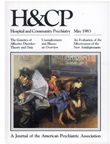Evaluating the Effectiveness of the New Antidepressants
Abstract
A review of the many controlled studies with these compounds shows two common problems in clinical psychopharmacology. The first problem is that many large studies, otherwise sound in design, have used heterogeneous populations in their samples, so that the results have been predictably obscured. Fortunately, most research studies today are designed to obtain a more homogeneous symptomatic population by the use of diagnostic criteria from DSM-III (21) or other research sources.
The second problem is that rating tools used for measuring therapeutic change are often obsolete. This problem is more difficult to address, and no acceptable solutions appear close at hand. Because of these two flaws in study design, it is possible that there are consistent significant differences in the comparative efficacy of these compounds that have gone undetected.
Superficially it appears as though the availability of these four new drugs adds little strength to the therapeutic armamentarium of the mental health professional. Certainly no decisive progress has been made in therapeutic effectiveness, and the verdict is still uncertain regarding the accuracy of the claims of faster onset of action. Yet some of these drugs do offer a more benign cardiovascular profile and fewer anticholinergic side effects. In addition, the development of trazodone paves the way toward other atypical antidepressants currently undergoing ambitious and, we hope, fruitful research.
Access content
To read the fulltext, please use one of the options below to sign in or purchase access.- Personal login
- Institutional Login
- Sign in via OpenAthens
- Register for access
-
Please login/register if you wish to pair your device and check access availability.
Not a subscriber?
PsychiatryOnline subscription options offer access to the DSM-5 library, books, journals, CME, and patient resources. This all-in-one virtual library provides psychiatrists and mental health professionals with key resources for diagnosis, treatment, research, and professional development.
Need more help? PsychiatryOnline Customer Service may be reached by emailing [email protected] or by calling 800-368-5777 (in the U.S.) or 703-907-7322 (outside the U.S.).



